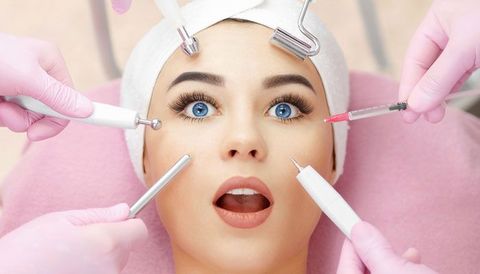Massage Spas 2025: Your Complete Guide to Relaxation, Healing & Wellness
Massage spas are spaces dedicated to physical relaxation, mental restoration, and overall wellness. They exist to provide a peaceful environment where individuals can reduce stress, alleviate tension, and support both physical and emotional health through therapeutic touch.
Massage therapy has a long history across various cultures, evolving from ancient healing practices into modern wellness care. In today’s world, massage spas combine traditional techniques with advanced technology, offering tailored experiences that focus on stress relief, rehabilitation, and holistic well-being.
The growing focus on health and self-care has made massage spas a vital part of modern lifestyle management, serving as a bridge between healthcare and personal wellness.

Importance
Massage spas play an important role in promoting overall health and balance. Their relevance continues to grow as people face increasing levels of stress and physical strain in daily life.
Key reasons massage spas matter today include:
-
Physical Relief: Massage helps reduce muscle stiffness, joint pain, and postural tension from long hours of work or exercise.
-
Mental Health Support: Regular massage can help lower anxiety levels, enhance sleep quality, and promote relaxation.
-
Preventive Wellness: Many people use massage therapy as part of preventive health care to improve circulation and boost immune function.
-
Accessibility for All: Massage therapy benefits people of all ages, from athletes to older adults seeking pain management or improved mobility.
In a world where digital connectivity often leads to burnout, massage spas offer an essential reset—helping individuals reconnect with their bodies and achieve mental clarity.
Recent Updates
Between 2024 and 2025, several developments have influenced how massage spas operate and evolve:
-
Integration of technology (2025): Many spas now use smart scheduling systems, AI-based wellness recommendations, and even robotic-assisted massage tools.
-
Holistic wellness packages (2024): Massage therapy is being combined with meditation, aromatherapy, and sound healing for a more complete experience.
-
Sustainability focus (2025): Eco-friendly spa designs, biodegradable oils, and water-efficient systems are becoming industry standards.
-
Personalized therapy plans (2024): Data from wearables and health apps is being used to create individualized treatment sessions.
-
Rise of virtual wellness (2025): Online platforms now offer guidance for at-home massage techniques and wellness routines for those unable to visit physical spas.
The global wellness industry continues to grow, with massage spas representing a major component of the broader health and relaxation economy.
Laws or Policies
Massage spa operations are regulated to ensure safety, professionalism, and ethical standards. These laws vary by country but generally include:
-
Licensing Requirements: Practitioners must complete accredited massage therapy training and maintain valid certification.
-
Health and Safety Standards: Regulations ensure proper hygiene, equipment sanitation, and safe practice environments for both therapists and clients.
-
Ethical Guidelines: Strict professional codes prevent misconduct and promote client well-being and respect.
-
Employment and Labor Policies: Many countries regulate working hours, therapist conditions, and wellness facility compliance under occupational health laws.
-
Data Protection Rules: Digital wellness platforms that collect personal health data must follow data privacy laws such as GDPR or HIPAA.
Governments and wellness associations are also introducing programs encouraging mental health awareness, with massage therapy recognized as part of integrative healthcare in several regions.
Tools and Resources
In 2025, digital tools and online resources make learning, planning, and managing wellness routines much easier. Some useful examples include:
-
Wellness Tracking Apps: Platforms like Calm and Headspace integrate with fitness devices to monitor stress and relaxation levels.
-
Massage Therapy Associations: Professional bodies such as the American Massage Therapy Association (AMTA) provide educational resources and ethical guidelines.
-
Online Wellness Directories: Websites list certified massage spas worldwide, with filters for treatment types and accessibility.
-
Ergonomic and Posture Tools: Devices and mobile apps help users track body posture and recommend relaxation exercises.
-
Virtual Wellness Programs: Online workshops teach self-massage techniques and mindfulness routines to enhance overall well-being.
These tools empower individuals to take a more informed and proactive approach to their personal health.
Example Table: Common Massage Techniques and Their Benefits
| Massage Type | Focus Area | Primary Benefit |
|---|---|---|
| Swedish Massage | Full body relaxation | Stress reduction, improved circulation |
| Deep Tissue Massage | Muscles and connective tissue | Pain relief, muscle recovery |
| Hot Stone Massage | Back and shoulders | Tension release, improved sleep |
| Aromatherapy Massage | Full body and senses | Mood enhancement, emotional balance |
| Sports Massage | Specific muscle groups | Injury prevention, flexibility improvement |
FAQs
What is the difference between a massage spa and a wellness center?
A massage spa focuses primarily on massage and relaxation therapies, while a wellness center often combines multiple health-related services such as physiotherapy, yoga, or nutrition counseling.
How often should one visit a massage spa?
Frequency depends on individual needs. Some people visit weekly for stress management, while others schedule monthly sessions for general maintenance.
Are massages suitable for everyone?
Most people can benefit from massage therapy, but individuals with certain medical conditions—like skin infections or blood disorders—should consult a healthcare provider first.
Do modern massage spas use technology during sessions?
Yes, many spas now integrate technology such as infrared heating pads, smart massage chairs, and biometric feedback tools to enhance the experience.
Is massage therapy recognized as part of healthcare?
In many countries, massage therapy is recognized as a complementary health practice, often recommended for stress relief, pain management, and rehabilitation.
Conclusion
Massage spas in 2025 reflect the growing global commitment to health, balance, and mindful living. As technology and wellness merge, massage therapy continues to evolve beyond relaxation—becoming a key component of holistic care.
The modern spa experience is no longer limited to luxury; it is part of a sustainable, data-driven approach to personal wellness. With proper regulation, ethical standards, and innovative tools, massage spas help individuals manage stress, restore energy, and enhance overall well-being.







